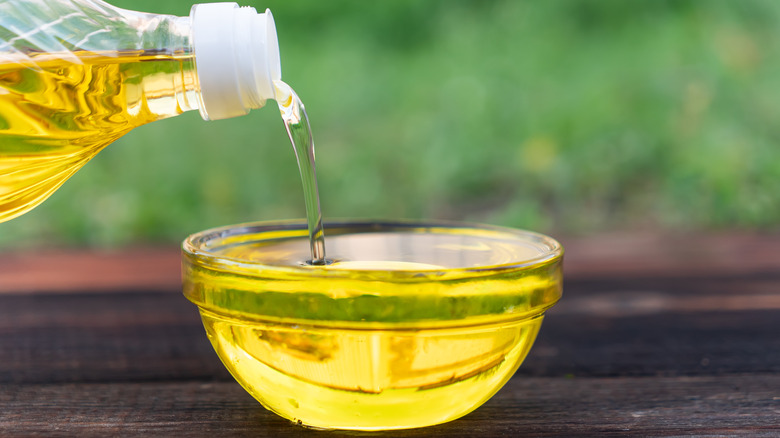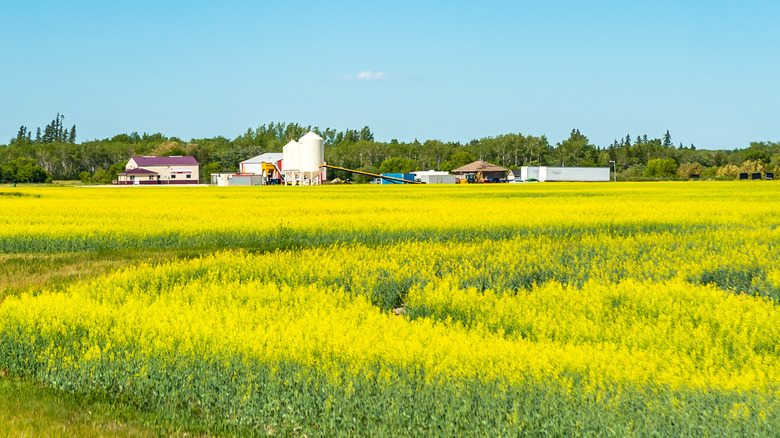The Country That Produces The Most Canola Oil In The World
Canola oil is one of those ingredients that does seem to be associated with any one country's cuisine, so you might not even realize who is producing it. Unlike olive oil and Spain or Italy, or corn oil and the American Midwest, canola oil has no cultural implications or geographic images associated with it — probably because most people don't know what it is. Canola oil actually doesn't come from anything called canola; it was renamed that because it comes from the unfortunately named rapeseed plant, which got that moniker from the Latin term for turnip, of which rapeseed is a relative. Why canola? Well, the new name came partially from the country that produces the most canola oil, our neighbors to the north in Canada.
According to World Population Review, Canada produces 20 million metric tons of canola oil every year, which is enough to top second place China by almost 5 million tons. The only other producers that come close are the combined countries of the European Union, but its largest single producer, Germany, doesn't even make a fifth of what Canada does. Considering that canola oil is the number three cooking oil used in the world — topped only by the controversial palm oil and soybean oil (via Statista) — this gives Canada a huge impact on world cooking without many people realizing it. But for something so associated with cooking and fried food, the reason Canada produces so much canola oil doesn't have to do with eating at all.
Canada tops the world in the production of canola oil
Despite the fact that rapeseed had been produced around the world for millennia, canola oil didn't become a big Canadian food product until the 20th century. Prior to being used widely as a cooking oil, rapeseed oil was used as industrial lubricant for trains and ships because it handles water better than other oils. During World War 2, the oil demand for Allied forces was through the roof, but a blockade was preventing the oil from being shipped, and Canada stepped up to the plate. Rapeseed doesn't tolerate high temperatures well, even in the summer, and the Canadian prairie provinces have extremely fertile soil, making them the ideal place to produce rapeseed oil, which led to the country becoming a major supplier during the rest of the war.
It took until the 1960s for the now-large Canadian rapeseed industry to develop variants that were more suitable for cooking oil because of concerns over the crop's high levels of erucic acid. Producers also wanted a native-grown cooking oil since Canada was importing 90% of its cooking oil at the time. When they finally did develop a plant with low acid oil, they wanted to avoid the rapeseed name and christened it "canola," shortened from Canadian oil, low acid. So not only is your canola oil likely produced in Canada, it's named after it too. With such major success, canola oil is Canada's number one cooking oil today and is the country's second-most produced crop overall.

